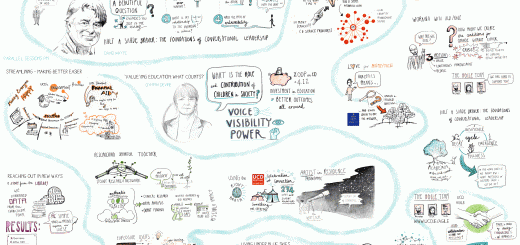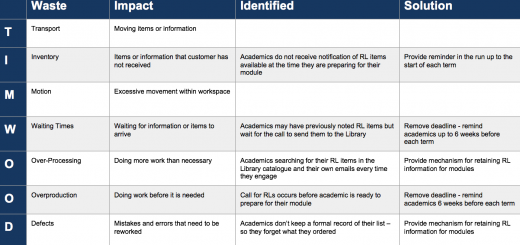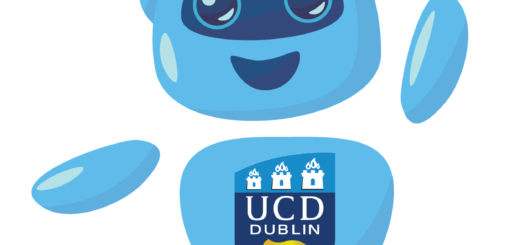If you need to understand what is causing a problem, then a Fishbone diagram is for you!
By Olga Murdoch, Agile Lead.
What is the tool used for?
A fishbone diagram is used when you want to find out what is causing a problem that you are experiencing. It is most effective when used in a group where you have the benefit of multiple differing perspectives.
Why should someone use it?
This tool provides a structured approach to understanding the root causes of a problem. As a visual and collaborative exercise it encourages different perspectives and for individuals to be open to hearing and understanding the experience of others. Using this approach before deciding on the solution to a problem can result in savings of both time and resources. Combining this tool with a cause/effect analysis further increases your chance of solving the right problem – and not just patching up the symptoms you are experiencing!
Directions on how to use it?
|
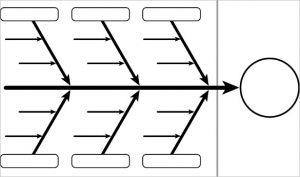 |
| What is cause screening? Cause screening is a technique for prioritising an improvement effort which will have the biggest impact with the least effort. | |
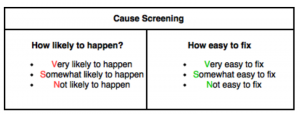 |
Example of where it has been used:
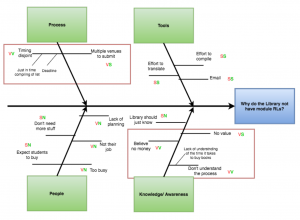 UCD Library teamed up with UCD Agile and the Curriculum Team to tackle a long standing problem of not receiving reading lists from module coordinators. This problem meant the the Library were not capable of fully supporting UCD students who wanted to borrow their reading list materials from the Library.
UCD Library teamed up with UCD Agile and the Curriculum Team to tackle a long standing problem of not receiving reading lists from module coordinators. This problem meant the the Library were not capable of fully supporting UCD students who wanted to borrow their reading list materials from the Library.
The Fishbone Diagram was developed with inputs from the Library, Curriculum Team and Academics (see above). Using cause screening, a quick win was identified. The timing of the call for reading lists was out of sync with how Module Coordinators work! As a quick win, the Library removed the deadline for submitting reading lists and sent out a reminder instead. The project delivering this (and other) improvements to the Reading List process resulted in a 50% increase in the number of modules supported by the Library. For further information on the library project visit: https://www.ucd.ie/library/news_publicity/strategy/projects/readinglists/
Why not try out this tool yourself, and let me (olga.murdoch@ucd.ie) know how you get on.
Contact agile@ucd.ie for support on using tools such as this and others.

